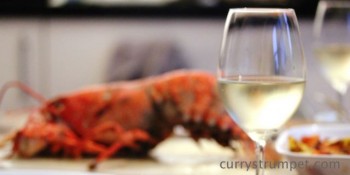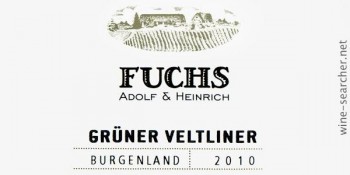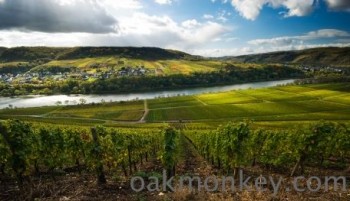Lobster: that quintessential luxury seafood dish that takes center stage however it’s served, whether it be alongside a choice cut of steak, mayo’ed up and served in a roll, or just by itself, cracked open and ready to dip and dab to buttery perfection. Lobster can have its rightful status as the great meal it is. How could it be any better?
Well, by pairing it with a crisp, mineral-heavy wine, of course. I indulged in a trio of lobster dishes and paired some great wines from Spain and Portugal, two countries that have rapidly become favorite go-tos for great wine.
It has become a summer tradition of mine to treat my family (a la Parks and Recreation’s Tom Haverford’s “Treat yo’ self!” mantra) to a slew of yummy lobster dishes. The best thing to do is buy a bunch of lobsters all at once, checking the local grocery stores and markets for when the deals hit, and plan out a number of dishes to have throughout the week with that all-delicious crustacean.
I started by purchasing seven Maine lobsters, all between 1.25 and 1.75 pounds, live from a local grocer. If you’ve never purchased live lobster before, be sure that you plan to cook and eat them that same day. With lobster, freshness is of absolute importance. However, following some simple tips, you can keep a lobster alive and healthy for up to 48 hours, should you need to. I recommend putting the lobster in a large cooler, wrapped in damp newspaper (or better yet, cardboard, as it’s more durable). Put a little bit of ice in the cooler. Keeping the lobsters cold will make them docile and easy to handle, slowing them down.
Get a large pot, like a turkey fryer, and boil the necessary amount of water, which is obviously dependent on the amount of lobsters you plan to boil. I don’t follow any particular recipe for this part. Chop up a couple of lemons, quarter 3 to 4 onions, chunk-chop some celery stalk, and toss it in the water. Season to your heart’s delight with Old Bay.
Once that water is at a good boil, submerge your lobsters alive … yes, alive. If you have something against cruelty to animals, get someone else to do this part and just close your eyes and bite your lip. You don’t want to kill the lobsters beforehand, but should one accidentally die, be sure to cook it as soon as possible. Lobsters that die prior to cooking have a reputation for being slimy and gross.
Boil for about 12 minutes; the more lobsters in the pot, the longer it may take.
Meal #1: Boiled whole lobster
This was a simple one. Pull the lobster out of the pot, cool it down at least enough to handle (the critters will keep cooking in the shell, I’ve found) by running some cool water over the lobster. Put it on a plate, crack, and begin the feast.
To accompany this meal, I chilled a bottle of 2012 Ulacia Txakolina and opened just prior to serving. The wine, by itself, seems like it would be a great aperitif, but it also was a perfect pairing with the lobster. It has a low alcohol level of 11 percent, so it is not overbearing relative to the flavor of the lobster, which I obviously wanted to savor.
The wine is made from a blend of Hondarrabi Zuri and Hondarribi Beltza, from the Getariako Txakolina region of northern Spain in Basque County. If you’ve never heard of those grapes before, no worries. They produce wines that are very similar to the wines of Vinho Verde, a more well-known wine region in northern Portugal that is across the border from Galicia (and which we discussed last week).
This particular wine had a great herbal and floral aroma with high carbonation, near sparkling, so it danced nicely on the tongue. There was a bit of acidity up front, but what I liked most was the minerality that matched nicely with the natural saltiness of the seafood. The wine had a dry and subtle finish that was truly refreshing. I give it a B+. You can find this wine at a great price ($15 is what I paid), and it’s meant to drink young, so buy up and have often!
Three lobsters down, four left. What to do? That night, I cleaned out the other lobsters, pulling all the usable meat and storing it in air-tight dishes and refrigerating.
Meal #2: The now-infamous Paula Deen’s lobster rolls
If you’ve never had a true lobster roll, march yourself to New England and indulge in one the best treats you can give yourself. While Paula Deen is loudly and proudly Southern, I found her recipe to be very reminiscent of the lobster rolls I’ve had in Maine and Massachusetts. Here’s her recipe. If the lobster meat has already been shelled, this is an easy-as-pie meal.
For this, I decided to stick with a wine that was similar to what I had the night before, but i jumped the border to Portugal and went with a $14 bottle of 2012 Niepoort Dócil from Vinho Verde. It’s made of 100% Loureira grape, with a perfume-heavy floral scent that is very attractive and pale yellow in tone, even somewhat opaque. The wine had noticeably more citrus up front than the previous night’s wine, but it gave way to the same granite-like minerality and a crisp finish.
Also at 11 percent alcohol, it was an easy-drinking wine that made for a pleasant chilled, lunchtime beverage. I could taste more of the steel in this one (it being steel-fermented) in the aftertaste, which was not something I personally favored. I didn’t get this from some other wines that were also steel-fermented, so it was a curious afterthought. A solid B rating.
Meal #3: The even more infamous (maybe) Martha Stewart’s Lobster Newburg
This is a great dinner meal to accompany other seafood sides, like spiced shrimp skewers or a filet of your favorite fish, along with some Old Bay cheddar biscuits. Here’s the easy to follow recipe. I followed it pretty much to a tee, but I made sure to stick with the Iberian wine theme and used a nice, medium-dry Spanish Amontillado sherry in the recipe. I had a bottle of non-vintage Valdespino Tio Diego Amontillado on my wine rack that has a nutty and creamy persistence to it, so I used that; this sherry was also good for sipping on after dinner.
During the meal, we drank a slightly chilled bottle of 2009 Peza do Rei Blanco, produced by the Adega Cachin winery, with grapes grown in Ribeira Sacra, Galicia, Spain. The wine makes use of a number of varietals in a blend of 70 percent Godello, 20 percent Treixadura, and 10 percent Albariño. I feel like this wine, less yellow and almost clear in color, was the most complex and added the most as a lobster accompaniment.
The Peza do Rei had a high dose of minerality and gave off an almost charcoal-like flavor that made me think it would match well with grilled seafood (something to remember the next time I grill some flounder or swordfish!). The acidity is not as potent in this wine, but it’s there in the form of tropical fruit hints. Like the others, it ended with a refreshing crispness that cleansed the palate. A great wine, A- rating, and at only $19, a best buy. This vintage might be at its peak, but the wine producer has already released 2010s and 2011s, so there is that to look forward to.
All in all, my two-day lobster feast was made all the better by trying some great wine offerings from northern Spain and Portugal. The Iberian peninsula’s white wines and seafood seem to pair extremely well.




